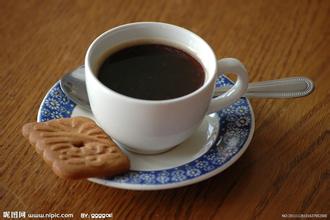Ethiopian coffee bean flavor description of the type of taste grinding scale processing method introduction
Flavor description of Ethiopian coffee beans introduction to the method of taste grinding and calibration
Ethiopian coffee is mostly produced in the plateau above 2000 meters above sea level, with large producing areas such as Djimmah, Gimbi, Yirgacheffe, Sidamo and Harar. Because of the soil conditions, climatic conditions and the altitude of more than 2000 meters in these areas, it has created an ideal environment for the growth of coffee crops. Among them, the Montenegro region of Harald is so far the only place in the world with wild coffee, where wild coffee is auctioned in London every year Harald coffee is a very special coffee, its taste is very aggressive, always ready to beat your taste buds A cup of Ethiopian Harald coffee can give you a primitive experience you've never had before. Ethiopia is the first country in the world to grow coffee and maintain the oldest coffee culture. To this day, it is still usually grown on a small scale and maintains very traditional and ancient coffee growing techniques and methods, so pesticides and other chemical fertilizers will never be used, so Ethiopian coffee, like Yemeni mocha coffee, is the best choice for those who advocate nature.
The dry aroma of Gemma coffee powder: there is a strong, raging incense wild nostrils, mixed with a little faint earthy smell, compared with the Indonesian Karosi aroma is not so long-lasting.
French pressure pot follicles: there are rich and long-lasting brown grease, taste mild and smooth, clean washing, there is a gentle sour, a little sour.
Washed Ethiopian wild djimmahji Mamoca coffee, under the wild appearance, is the gentle heart; it is indeed a relatively high-quality low-acidity coffee.
Sidamo
Sidamo sidamo
"Ethiopian Sidamo" is a type of single origin and grows in Arabica coffee in Ethiopia's Sidamo province. Like coffee in most African countries, Ethiopian Sidamo is characterized by small gray beans, but characterized by its rich, spicy, wine or chocolate-like taste and floral aroma. The most distinctive flavors found in all Sidamo coffee are lemon and citrus with bright and crisp acidity. Sidamo Coffee includes Yirgachefe Yega Snow Coffee and guji Coffee, both of which are of high quality.
Where is Sidamo in Ethiopia?
The main producing areas of Ethiopian coffee are Harald (Harar) in the east, Djimmah (southwest) and Sidamo (south).
The unique fragrance of Yirgacheffe comes from Yirga, a small town in the northwest of Sidamo province. Yirgacheffe coffee raw bean is one of the most distinctive coffee in the world, rare and expensive. It is produced in the plateau of Ethiopia's Sidamo province (2000 meters above sea level). It is an outstanding representative of washed coffee in Africa. It has always been famous in the eyes of global coffee connoisseurs. Rare washed high-quality Elaraby plus coffee, suitable for all degrees of baking, perfectly showing a fresh and bright aroma of flowers and fruits. Beautiful and complete bean shape, is the general mocha incomparable high-grade coffee. It has unique fruit aromas of citrus and lemon, with aromas of jasmine, sour taste similar to wine, clean and unmixed taste, just like freshly boiled citrus fruit tea with a long finish. Full of floral and citrus aroma, the performance is exciting, moderate roasting has a soft sour taste, deep roasting gives off a strong aroma, rich and uniform taste is the most attractive feature of Ethiopian Yega snow coffee, known as the best coffee beans in Ethiopia, is the representative of East African boutique coffee, and Yega snow coffee is the most unique flavor in the world today.

Important Notice :
前街咖啡 FrontStreet Coffee has moved to new addredd:
FrontStreet Coffee Address: 315,Donghua East Road,GuangZhou
Tel:020 38364473
- Prev

Introduction to the variety grinding scale of the flavor description treatment method of Ethiopian Yega Fishi Dama Coffee
Ethiopian Yegashifi Sidamo Coffee Flavor description and Variety Grinding Calibration Yega Snow Coffee Ethiopia Washed Yirgacheffe, as the top washed coffee in Ethiopia, the country of origin of coffee, has the characteristics, high quality and low yield, so it has the factor of top coffee and is naturally very popular. Yejaschenne is almost the best coffee in Ethiopia.
- Next

Flavor and taste of coffee beans in Honduras introduction to the varieties of grinding calibration by regional treatment in manor
The flavor and taste of Honduran coffee beans are introduced in the coffee plantations, where coffee beans are picked by hand and processed carefully in order to produce better quality coffee beans because they are planted in mountainous areas. Honduras collects 3 million bags of coffee every year and provides you with multi-quality coffee, which has become one of the top ten coffees in the world.
Related
- Detailed explanation of Jadeite planting Land in Panamanian Jadeite Manor introduction to the grading system of Jadeite competitive bidding, Red bid, Green bid and Rose Summer
- Story of Coffee planting in Brenka region of Costa Rica Stonehenge Manor anaerobic heavy honey treatment of flavor mouth
- What's on the barrel of Blue Mountain Coffee beans?
- Can American coffee also pull flowers? How to use hot American style to pull out a good-looking pattern?
- Can you make a cold extract with coffee beans? What is the right proportion for cold-extracted coffee formula?
- Indonesian PWN Gold Mandrine Coffee Origin Features Flavor How to Chong? Mandolin coffee is American.
- A brief introduction to the flavor characteristics of Brazilian yellow bourbon coffee beans
- What is the effect of different water quality on the flavor of cold-extracted coffee? What kind of water is best for brewing coffee?
- Why do you think of Rose Summer whenever you mention Panamanian coffee?
- Introduction to the characteristics of authentic blue mountain coffee bean producing areas? What is the CIB Coffee Authority in Jamaica?

